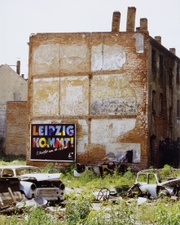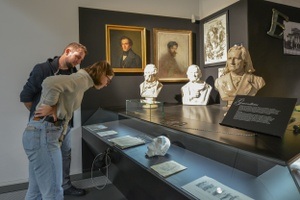Lara Almarcegui: Angehaltener Aushub
In the organizer's words:
What traces of geological, political and social changes can be found beneath the city? This year, the GfZK is realizing a site-specific collaboration with the Rotterdam-based artist Lara Almarcegui. Since the mid-1990s, a time of construction boom and extensive urban renewal in Europe, she has been working on processes of urban transformation. She is particularly interested in conditions that are not usually the focus of attention, such as derelict areas.
In Leipzig, Almarcegui went to a major construction site. For one day, she paused work on the new building for the Leibniz Institute for Regional Geography (IfL) on Wilhelm-Leuschner-Platz. They were stopped at the moment when the deepest layers were reached. The artist invited the public to join her in the excavation pit to view the uncovered material and historical layers of the city before they were covered again. At Wilhelm-Leuschner-Platz, a place of transformation, the artwork deals with the urban change brought about by construction. Almarcegui has developed a video installation for the presentation of the project at the GfZK.
Artist:
Lara Almarcegui
Curator:
Franciska Zólyom
As part of:
Things That Were Are Things Again (collection exhibition)













